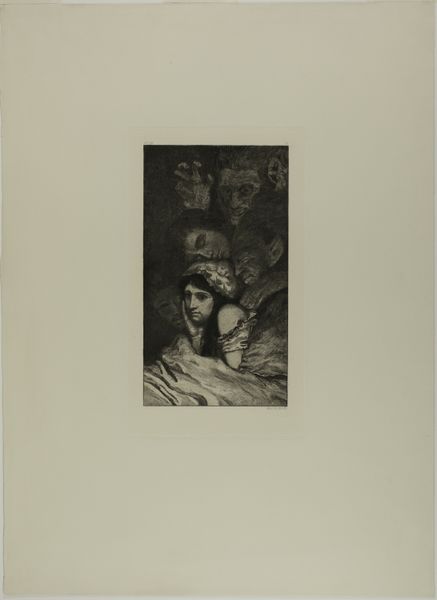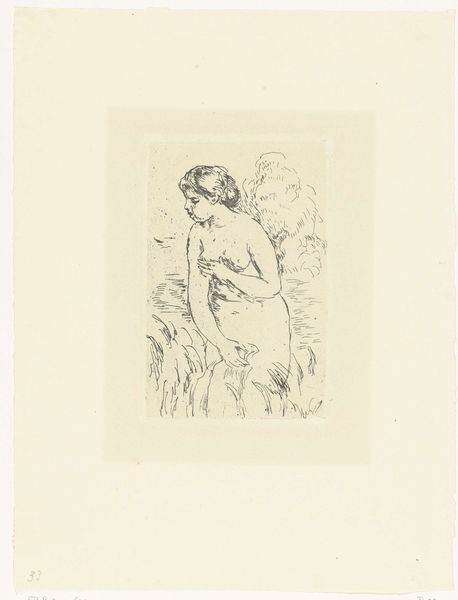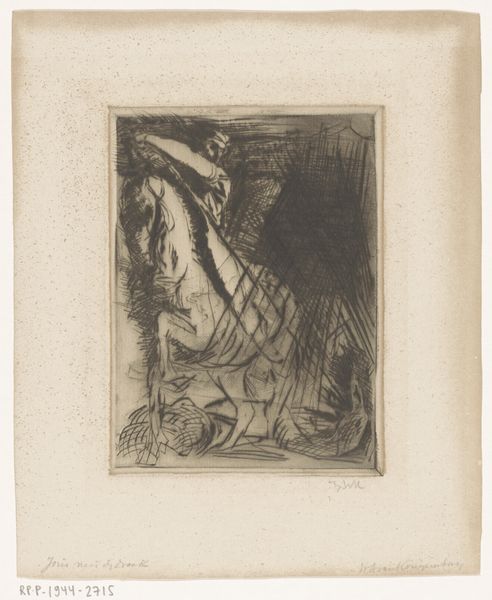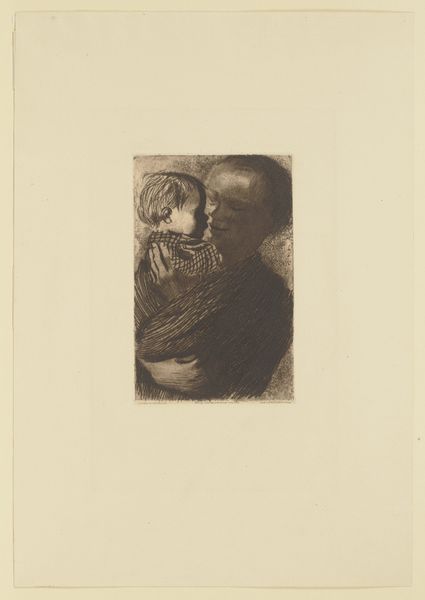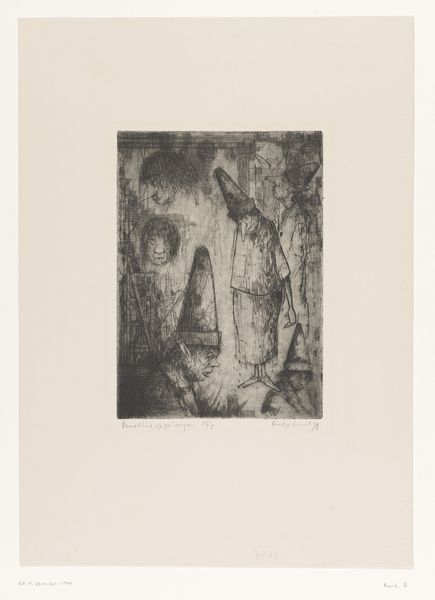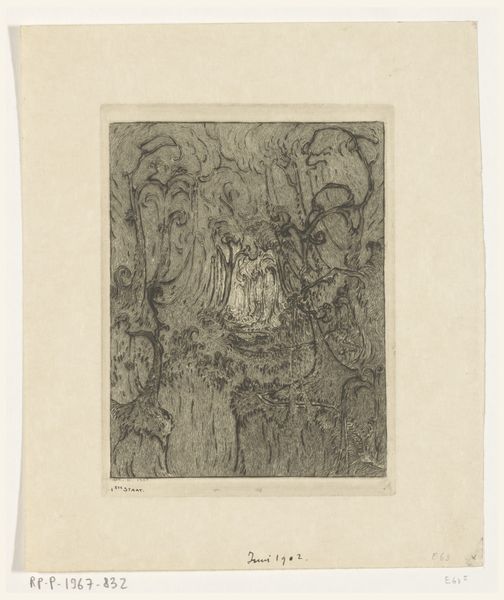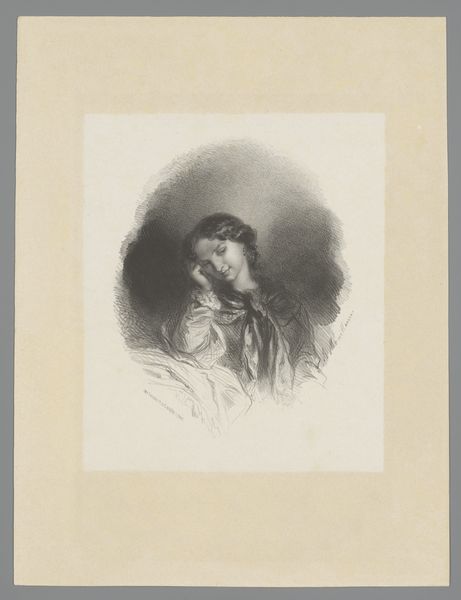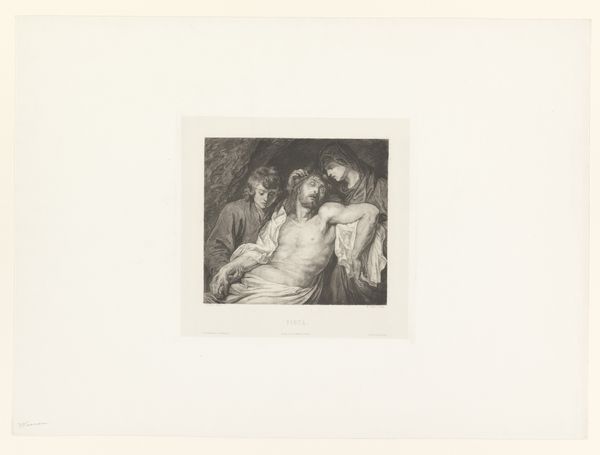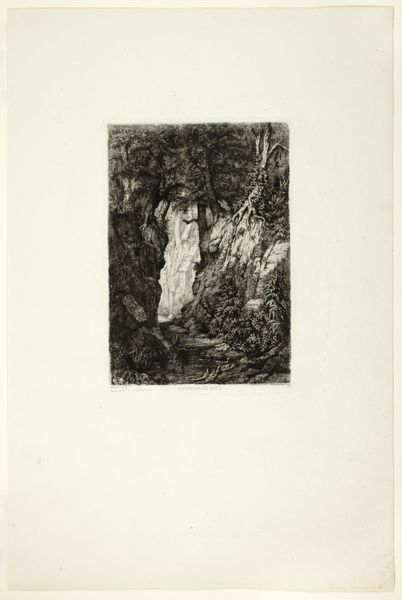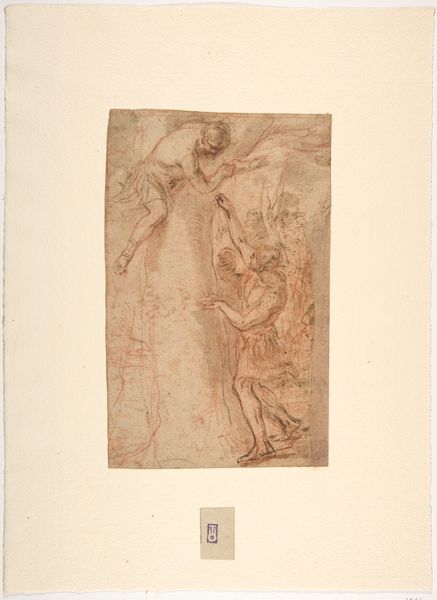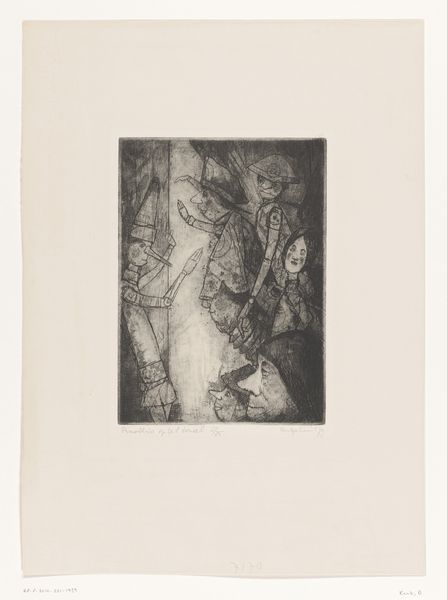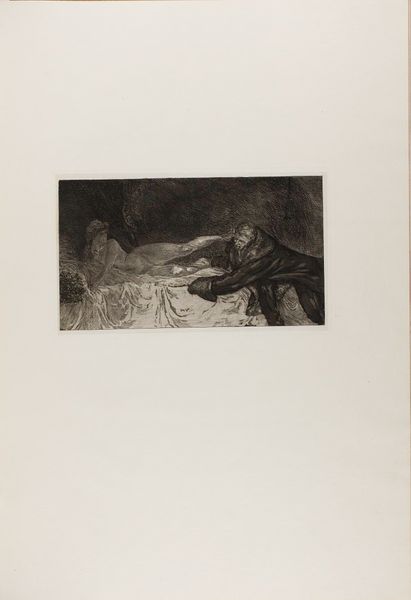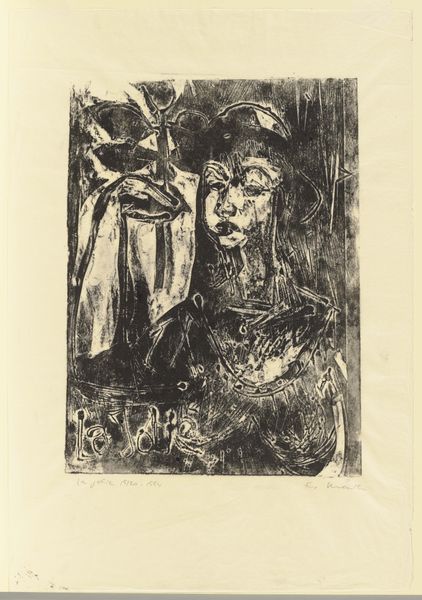
Dimensions: height 247 mm, width 207 mm
Copyright: Rijks Museum: Open Domain
Editor: This is "Groep mijnwerkers keert zich tegen één man om de betaling," or "Group of miners turns against one man for payment", made around 1907 by Théophile Alexandre Steinlen, using pencil and etching. The scene is quite intense. I'm struck by the compressed composition, like everyone is pressing in on each other. What catches your eye? Curator: Initially, it is the tension arising from the compositional structure itself. The tightly packed figures, rendered with rapid, almost frantic pencil strokes, create a palpable sense of claustrophobia. Observe how the artist employs hatching and cross-hatching to delineate form and convey texture, building tonal depth and suggesting the harsh conditions endured by these workers. Editor: It does feel very confined. Is that a technique common in depictions of laborers? Curator: More broadly, it speaks to a formal strategy of heightening emotional intensity through deliberate spatial constriction. How do the relationships between figures, their gestures and orientations, contribute to the narrative? Editor: The central figure being confronted is visually isolated by the aggressive postures of the group. His downcast gaze and slumped shoulders imply defeat or resignation. It’s as if the composition itself is enacting the social pressures. Curator: Precisely. Steinlen uses the intrinsic qualities of the image to reinforce meaning. The formal elements of line, tone, and spatial arrangement actively shape our understanding of power dynamics at play, yes? Editor: I see what you mean. Focusing on how the artist manipulates form makes the message even more powerful. I initially just saw a group of angry people, but the technique amplifies that tension. Curator: Indeed. A close reading of form unveils how an artwork communicates and constructs meaning. I’ve learned much from our formal review.
Comments
No comments
Be the first to comment and join the conversation on the ultimate creative platform.
